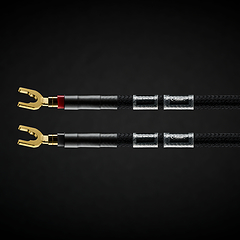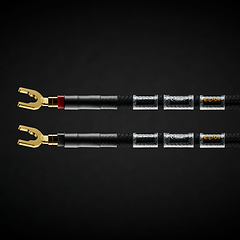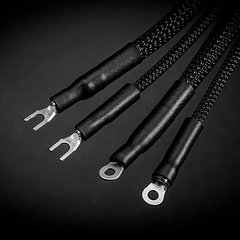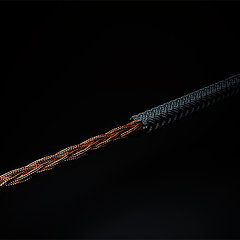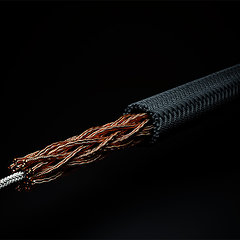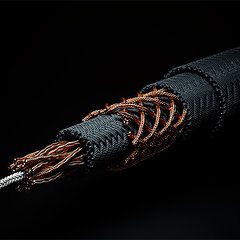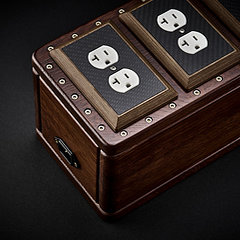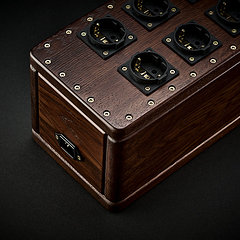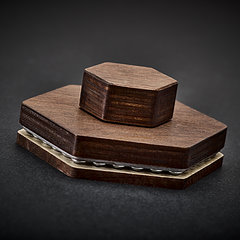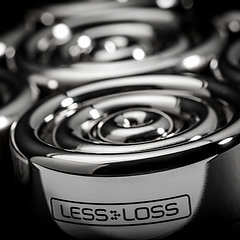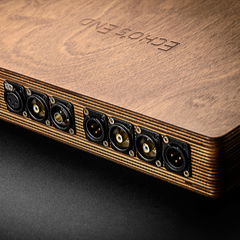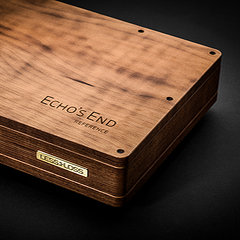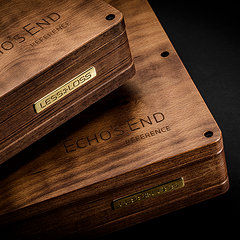 667
667
C-MARC™ RCA InterconnectsC-MARC™ XLR InterconnectsC-MARC™ Speaker CableC-MARC™ Prime Power CableC-MARC™ Classic Power CableC-MARC™ Stellar Power CableC-MARC™ Bulk Wire and CableC-MARC™ Digital CableFirewall ModuleEcho's EndBindbreakerBlackbodyPower distributorBlackGround DIYBlackGround 6x/10x Power BaseBlackGround 8x/10x Speaker Base
DFPC Original (legacy)DFPC Signature (legacy)DFPC Reference (legacy)DFPC Series (legacy) (all)Digital Cable (legacy)Firewall (legacy)Anchorwave (legacy)Homage to Time (legacy)Tunnelbridge (legacy)Laminar Streamer (legacy) All Because of the sheer number of reviews, you can sort them above to quickly find LessLoss products of interest.
Anchorwave Speaker CablesDate Added: 11/23/2014 by Florin S
Hi Liudas,
I got the cable yesterday in the evening, and it has only around 5hrs of burning-in, but I already can say: this cable is superb! Without any questions or doubt. Even if in the very first beginning (first half hour, maybe a bit more) I was almost disappointed - the sound was thin, 'shy', with limited dynamics, very very smooth (smothness is not a bad thing), but so smooth that all transients were too much 'rounded', that I coulnd't enjoy the music at all. BUT, surprinsingly, after at least 1hr or 2hrs I couldn't recognize the initial 'signature' of the sound! The cable even without being breaked-in is a super cable, in all areas, and I like it so much already! It amplifies greatly all the sounds qualities we (audiophiles) are searching and talking about: naturalness, true timbres, resolution, low level noise, dynamics, soundstage, speed, bass control and so on , but above all musicality without sacrificing neutrality, and all these and many more without any audible drawback! I can say really this is a top cable among the best cables ever. It brought my system to new level and I want to emphasize one more thing: that I never heard from any cable I personally tested (even the very expensive ones costing many times the Anchorwave's price) - the texture, realism, timbre, definition and resolution of the bass- this is amazing! I hope you're still having these cables, cause I'm looking forward to replace the other XLR cable I currently have between the pre and amp (the Anchorwave is now between the source and pre) - which is a MIT Shotgun 330. I'm sure it willl bring my system to an even higher level! That's it for the moment and many thanks! Wish you all the best and success in all your projects! Regards, Florin Anchorwave Speaker CablesDate Added: 06/21/2013 by Tomas
After spending over three years upgrading components, cables, and furniture, constantly adjusting speaker position (and loosing quite a significant amount of cash) I finally dared to approach LessLoss for their products. Step by step, I got the full range of LessLoss basic level cables: DFPC Originals for power, Anchorwave XLR for interconnect between components and the same Anchorwave to connect the speakers to my solid state amplifier.
The result is obvious: I could have saved a lot of time and cash if I had gotten familiar with LessLoss in the beginning of my relationship with real hi-fi. The sonic experience I got installing the LessLoss cables brought me one simple realization: that’s the end, no more efforts for further upgrades, it is time for listening. I’m happy now: my wife doesn't complain to me of a headache when I put DSD files on, my friends (who are quite skeptic towards hi-fi ideas) don’t consider my system of lacking deep low range anymore. But the most important thing is that I want to sit and to listen to my beloved records over and over again. The LessLoss cables upgrade lets me listen at lower sound levels than before, I can spend hours listening and hearing everything, and afterwards I still feel fresh. I don’t want to talk about sound stage, instrument positioning, etc. because it’s not important any more. Now I have one simple criteria for hi-fi: the pleasure. I could give one piece of advice for persons continuously seeking better sound and starting to forget just listening to the music: log onto the LessLoss web shop, give it a try and you won’t look back at other options. For those who are curious for details: I use demanding Mordaunt-Short Performance 6 LE speakers with the last incarnation of Marantz NA/PM 11 set. Anchorwave Speaker CablesDate Added: 06/08/2013 by Barry Howard
After many years chasing the holy grail in cabling I tried 1 of the Lessloss dynamic filtering power cables and that led me to replacing every other one in my system with them and then 6 Blackbodies. For interconnects and speaker cables I went through Kimber, Straightwire, Nordost, Anti-Cables and then the gamut of Cardas wire finally feeling comfortable with Neutral Reference for phono and speaker cable and Golden Reference for everything else.
When I became aware of the Anchorwave line I contacted Louis and after consideration of my system he suggested that his product could improve on lowering the noise floor and increasing resolution without giving up the rich texture of the Golden Reference. I went all in based on my trust of him and I was not mislead. It was all of what he said with the addition of natural harmonics that are on the recording that I find very involving when listening to music. They are so quiet and engaging. I worked with him to build the phono interconnect with grounding wires that makes his cable dead quiet and eliminating the usual residual hum that I had become used to at high volume levels. So much for the theory that phono cables need only be minimal strands of wire; this huge amount of copper does the job well!! I am writing this review because after 18 months of getting used to the Anchorwaves I got the upgrade bug again so ordered the full suite of Morrow Audio's top of the line cables, SP-7, PH-6, etc. and burned them in for 600 hours. I now have a deeper appreciation for the Lessloss products and confirmed for myself that they allow the harmonic structure to shine through so that the desperation in a vocalist's voice or the bowed string on a cello or a tenor sax that I treasure so much is clearly evident. If the Anchorwave is this good how good is the Tunnelbridge?! Anchorwave Speaker CablesDate Added: 11/01/2012 by Aaron Knock
My system:
Speakers: Focal 816V Speaker Cables: LessLoss Anchorwave (3m) Amp: Yamaha RX-A 3010 Interconnects: Kimber PBJ Source: Cambridge Audio 650C Power cords: LessLoss DFPC Original; LessLoss DFPC Signature Power conditioner: LessLoss Firewall Power distributor: Furutech e-TP60 Before the Anchorwave I used the Kimber PBJ interconnects ($150 for a 1m pair). I've been quite pleased with their performance. I don't like incremental upgrades (who does?), and so where the PBJs have been known to play ball with much more costly interconnects, I knew this was going to be an expensive endeavour. The nice thing about LessLoss is that, since you're buying straight from the company, you know you're probably paying nearly 2-3 times less than had they made the product available by importing, distributing, and then finally selling it to you through a dealer. So, even though the Anchorwaves cost 5 times what the Kimber does, there's consolation in the fact that you're probably getting what would otherwise be a $2000-plus interconnect, but for under a grand. Of course, the question comes to mind, "well, does the Anchorwave offer 5x better performance than the PBJ?" No. Of course not. But for me, the differences don't have to be 5x greater for them to be significant. There were many significant reasons I chose the Anchorwave interconnects over others. First, I already have the Anchorwave loudspeaker cables, and I've been exceptionally pleased with their performance. Second, (and maybe this is the same as the first), for system synergy. Since I was already having excellent results with the Anchorwave speaker cables, and since I couldn't afford what seemed like the Holy Grail of interconnects (the LessLoss Tunnelbridge), it only made sense to completely employ this cable technology from the source to my loudspeakers. Third, the cost. I know from experience (also inferring from press and user reviews) that the loudspeaker cables perform very well among much more expensive cables. So it seemed reasonable to expect the same from the matching interconnects. Lastly, I knew that if by some chance this interconnect was a disaster, I would have no trouble getting my money back. All my previous experience with LessLoss suggests that Louis Motek makes great efforts to make customers happy. I don't know how he does it: runs the business and still finds time to quickly offer generous replies. When I first listened to the cable, the thing that immediately struck me was the drop in noise. I expected that from the LessLoss power cables, but I didn't expect it like this from the interconnect. I mean, yes, I heard this kind of thing with the Anchorwave loudspeaker cables; I think it caught me off guard because I was now hearing that enhancement at the next level so-to-speak. I've recently placed my speakers even farther from the back wall. While it gave me a much better soundstage, I lost a lot of low end (no matter from where I evaluated in the room). With the Anchorwave interconnects I was very pleased to hear some of this bass restored. I also experienced something totally unexpected. I was listening to a song where the instrument positioning just sounded lop-sided on stage (like the right speaker was imaging the musicians lower than than the left). I'd always just written this off as a quirk in the recording. But when I heard the song through my new interconnects, the sound stage was balanced. That was a shocker. The other things I noticed were subtle improvements, probably from the drop in noise: I noticed an all around enhanced clarity and detail. I can say that some things sounded identical to the Kimber, particularly with sounds when you pay attention to the pronunciation of words in male and female vocals. Nevertheless, I haven't yet found anything that sounds worse. In the end, I must say, there certainly were notable differences from switching to the Anchorwave interconnects. It makes me want to listen to all my favourite tracks all over again, just to hear what I've been missing. One thing I love about the interconnects is the locking connectors. I really appreciate having control over how tightly the connectors mate with my gear. Nothing feels cheap about this cable. From end to end, everything looks and feels as if it was very well built. The cable is reasonably flexible, so I had no problems installing it. Despite its simple external appearance, it has a certain element of beauty. It's nice to trot behind the components and admire it from time to time, especially if you become familiar with the technology inside. Anchorwave Speaker CablesDate Added: 10/07/2012 by Frank
I like playing with cables, in fact so much so I used to be in the business of making and selling them. I have not lost that fascination at all even now, so when the opportunity arose to evaluate some LessLoss Anchorwave RCA interconnects from Scott Nangle Audio [located in Scotland, UK], it piqued my curiosity and simply couldn't be missed.
I am told these are hand built with in-house materials and you can without any doubt see the quality and workmanship that has gone into these cables. The Anchorwave interconnects sent to me are oval in cross-section, are no lightweights either and have a large curious rectangular tag of faux leather "butterfly wing" near each connector that looks strange at best and makes connecting them up no easy task with vertically aligned RCA sockets, because they obscure the bottom socket if the topmost one is connected first. My tip is to connect to the bottom RCA socket first and aligning these "wings" out of the way to make connecting up the top set easier. I tried to slide them up the cable but they seem firmly attached to the connector. They do though give the cables a clear identity so they are unlikely to be confused with any other brand of cable. Whenever I have a new set of interconnects to evaluate, I do my level best to ignore them during any burn-in period and will have the system on as background music only while I am busy doing other things, so it came as a surprise to me that this cable somehow DEMANDED my immediate attention. It wasn't drawing attention to itself by having luscious bass, or crisp treble, or fireworks a-plenty with vivid dynamics, but it was none of those in isolation that drew me into the sublime sounds these cables were producing, most unlike any other cable heard to date. There wasn't soaringly high treble definition to grab you, there wasn't a bottomless bass to beguile you, there wasn't a seamless midrange to enchant either, and yet there I was being drawn inexorably into the music I was hearing because of it's sheer involvement and taken well beyond the proverbial toe tapping stage, into the murky realms of me singing along with the music too. Gosh and yeuk too. Many a time in the past while auditioning cables I will have had the "Crikey, not heard that before" moments as isolated events, but this cable turned those moments into an endless joined up procession of musical joy, so CD after CD went into the player long into the nights and time simply stood still for me. Even the CDs I would normally dread playing took on a whole new musical character, one of those being George Michaels "Older" album which has some awful stings in the treble registers and no shortage of sibilance that can be painful enough to keep the volume turned down low. The Anchorwave managed to untangle this recording and lose the sting, yet still present the fine treble, reverb and ambience details this CD has tucked away, so it isn't just masking or attenuating the treble either. When it comes to the bass registers, this cable had to beat my own all time favourite bass communicator from Virtual Dynamics in the shape of their Genesis interconnects - now sadly no more. The Anchorwave easily outperformed the Genesis in every respect, because while the Genesis was always bass articulate, coherent and never shy of the lowermost octaves, it sacrificed the topmost registers and midband accuracy to achieve that, whereas the Anchorwave has no such traits and reproduced the entire audible band with accuracy, neutrality and sheer musicality. To sum up then, these cables don't "do hi-fi" and to me that sets them well apart from the herd which will have degrees of that trait in their make-up. What they do do, is transmit the music in a way that not too many folks are familiar with and if you have owned high end cables like Nordost and Chord it will come as a shock that a cable can be so MUSICAL and you can listen for many hours and then some. In value for money terms they are not cheap but I would see that as an investment rather than anyone continue on a journey for a long time trying cable after cable to find one with equal musicality. Would I buy them myself? Of course I would ;-) Associated equipment: Eastsound E5 CD player, XTZ Desire A-1000D3 amp, Focal Chorus 706V SE, Randall Research silver interconnects, Tellurium TQ Black speaker cables, Belkin conditioner Anchorwave Speaker CablesDate Added: 10/06/2012 by Aaron Knock
I love my new Anchorwave speaker cables. Like most, I only have so much money for hi-fi, so I try to make upgrades in as few steps as possible. I just might stick with these cables for the rest of my life.
Since owning the Anchorwave speaker cables, I've had chance to compare them against two very different cables: expensive Siltech cables, and relatively inexpensive Kimber 4TC. I'll discuss the Siltech comparison at length since it's more interesting. The Siltech (model 770L) costs more than $4,000 more than the Anchorwave. The system belonged to a local hi-fi shop. It consisted of: Moon 700i amp ($12,000) Moon 750 DAC ($12,000) Siltech 770i ($3,000) Siltech 770L ($6,200) Focal Electra 1028 Be ($9,000) LessLoss DFPC Signatures / Firewall (provided by me) What differences would I hear (if any)? Would they even be significant? Would I walk away disappointed with my Anchorwaves? I really didn't know what to expect. My dealer was quite clear (a very experienced fellow, but never heard of LessLoss) he said he'd tried high-end cables from Nordost and Cardas, (among other loudspeaker cables brands), but that for years, nothing has been able to compare to the Siltech. So, before I even finished unpacking the Anchorwaves, he laughed and told me that I was about to be seriously disappointed. I came in not knowing what to expect, but it seemed he already had it figured out before we even hit play. This isn't about to be one of those glorious conversion stories. No, in fact my dealer is still determined to think the Anchowaves are an overpriced hi-performance cable. He said he'd prefer Kimber 4TC at $200 for 2m. Of course, I think that's bloody insane. Let me explain why. We began listening to with the Siltech cables in place. This was yet without any LessLoss power cables or Firewall (just some low cost Shunyata power cables). When we switched to the Anchorwaves, as soon as I hit the stop button, he chimed in, "Yup! Just what I thought: poorly balanced; too much bass and too much treble…" Now, I was actually disappointed at this point, too. The differences between the cables were like night and day—nothing subtle about it. I heard some nasty highs that were painfully obvious, and the bass levels had increased as well. (Keep in mind, this is with the Siltech interconnect, not the LessLoss Anchorwave interconnects). I heard lots of "I told you so" at this point. But this is where it gets interesting. I then used two LessLoss DFPC Signatures, with a LessLoss Firewall between them, to power the Moon 750 CD player. Then I used the remaining DFPC Signature to power the amp. With this setup, we then sat back to listen. Immediately there was a radical improvement: all that nasty treble was gone! I was blown away. The cable's balance was much more settled. This time, as soon as I hit stop, I said, "Wow! All that rubbish in the treble range is now gone." After a few moments of silence, he then remarked how there was much too much bass. I proceeded to ask genuinely just how one can determine whether that's just the way it was meant to be: perhaps that's what the recording just sounds like. He suggested that after more than two decades of listening, you just know. I really didn't think the bass levels were out of balance, or overbearing, at this point. Nevertheless, there was still another surprise to be had. We switched back to the $6,000 Siltech cables. This time we had LessLoss power cords and Firewall at work, just like with the Anchorwaves. A few seconds after hitting play, I just grinned (to myself). I had just received something of a lecture from this guy as to why all that bass shouldn't be there, and how the Siltech cables just do it right; yet, here we were and the bass levels sounded virtually identical to those of the Anchorwaves. Oddly enough, he didn't say a word about it. Neither did I: I was there to hear cables, not for any "I told you so" purposes. What I also noticed was that, in contrast to the Anchorwaves, the Siltechs sounded very much coloured in the mids and highs. One might describe it as very smooth, or silky. Whatever it was, while it may have been "smooth" or "silky," it now sounded like a coloration rather than something natural. That's definitely not what I'm looking for in a cable. I want something as close to colourless as possible, and there's no doubt in my mind that the Anchorwaves were doing a better job at it than the Siltechs. What I was able to draw from this experience is firstly, the importance of power filtering. Without the LessLoss cables, I would never have heard the potential of the Anchorwaves. If I was a Siltech owner, I might've attributed the cable's coloration's to another component and erroneously replaced it instead. I have no doubt that, additionally, listening with the system over time, many more notable things would become apparent (just like they have in my own system). Even the dealer was quick to acknowledge the virtues of the LessLoss power filtering, after the fact. I'd swear by those products. Secondly, I've walked away knowing that the Anchorwaves can play some serious ball with cables more than triple in cost. I suspect too, that with matching interconnects, or the LessLoss Tunnelbridge, the Anchorwave speaker cables have yet much more to offer. When I first sat down to listen to my system with the new Anchorwaves, the improvements were so significant that I just started laughing. For any musicians out there, you should know what I'm talking about. Imagine as an amateur player, you play something on your instrument. You then hear some professional play the same thing. The differences can be so striking that you just sit there and laugh (or feel depressed because you realize just how bad you are by comparison). Well, that's what it was like for me when I got the Achorwaves. Before that, I owned Kimber 4TC loudspeaker wire. There's just no comparison. Thanks to Louis and the people at LessLoss, I'm content to cross off "loudspeaker cables" from the long term hi-fi upgrade list. My system: Speakers: Focal 816V Speaker Cables: LessLoss Anchorwave Amp: Yamaha RX-A 3010 Interconnects: LessLoss Anchorwave Source: Cambridge Audio 650C Power cords: LessLoss DFPC Originals (2); LessLoss DFPC Signatures (3) Power conditioner: LessLoss Firewall Power distributor: Furutech e-TP60 Anchorwave Speaker CablesDate Added: 10/04/2012 by Steve
I've been gradually replacing all my Shunyata cabling with LessLoss products. I was never unhappy with my Shunyata power cords, interconnects, or speaker cables, and in fact I chose them only after a lengthy comparison with other products. But the switch to LessLoss cables has been a revelation, and I'm glad that financial necessity forced me to make the change in stages. It allowed me to appreciate the contribution of each type of cable.
First to go were my top-of-the-line Shunyata power snakes, replaced by LessLoss Signature cables. (Actually, they were first replaced--and bettered--by the Original DFPC, and those cables impressed me so much I immediately upgraded to the Signatures--a dramatic further step forward.) Then I replaced my interconnects with Anchorwave interconnects, and then finally I replaced my speaker cables with the Anchorwaves. At each stage, the improvement was startling. Music was more natural and less electronic; countless new details emerged from very familiar recordings and my preferred test tracks; imaging and soundstage were much more tangible and lifelike. And after each round of replacements I was convinced that I'd reached a level of realism from which any further improvements could only be very subtle. But then when I replaced the next set of cables, the improvements were not subtle at all. So now that I'm fully cabled LessLossily, I suppose next I'll have to upgrade to Blackbodies or some other weapon in the company's arsenal. I believe I've learned not to underestimate the benefits of introducing more LessLoss products into my system. One more thing: As I introduced more and more LessLoss cables to my system, I also noticed that occasional but persistent moments of irritating edginess on certain otherwise good recordings began to disappear. I'm quite sure this was not because the LessLoss cables colored everything lovely. Crappy, irritating recordings still sounded crappy (sometimes in even greater detail). Evidently, what had changed was that I was no longer hearing some of the relatively minor flaws in the otherwise first-rate cables I had been using. To me, this was further confirmation that the LessLoss cables do indeed distort less--and conspicuously so. I should add that I'm a musician, an acoustic musician, and I know what instruments sound like. As far as I'm concerned, the LessLoss cables are one of the great bargains in audio. Anchorwave Speaker CablesDate Added: 05/30/2012 by Steve
I recently acquired two sets of Anchorwave interconnects to compare to my Shunyata Aries-S ICs. I've lived happily with the Shunyatas for many years and still feel they're a class act. But the Anchorwaves clearly surpass them, in ways that remind me of the virtues of the DFPC Signature (5 of which are currently in use in my system). I could go through the usual list of apparent cliches in describing how the Anchorwaves excel--say, by mentioning extra layers of detail, better imaging, greater tonal weight and more lifelike timbres (what my wife sums up as added richness). But I think the best way I can convey my excitement about the Anchorwaves is to mention that I planned to write my comments several days ago. However, whenever I had the time to sit down and crank out a paragraph or two of appreciative comments, I also had the time to listen to familiar recordings and discover how much better they now sounded and to experience the surprise of hearing many details that my Aries had failed to reveal. Each time, my audio enthusiasm and hedonism trumped what I felt was my obligation to write a mini-review.
Let me just add that the Anchorwaves are beautifully made and very reasonably priced. LessLoss continues to impress me with its innovative and cost-effective engineering. Anchorwave Speaker CablesDate Added: 02/19/2012 by Jukka
Bought a 2nd pair of Anchorwave loudspeaker cables to bi-amp my speakers. They aren't quite burned in yet, but what a difference compared to a jumper connecting the bass and midrange/tweeter. Coherence, coherence and coherence again. There is better definition and control. That and equal signal input to the drivers leads to so much better timber and tone purity that you just have to smile. That little sibilance in women voices and higher frequencies is gone also. But what I hadn’t quite foreseen was the incredible addition the purity/coherence gave to the soundstaging. So much more size and depth and awesome realism (well, hifi realism that is ;), but wow! =)
Ok, it did cost some to get biwiring, but it has definitely been worth it. I'm very pleased. 
LessLoss started its business on Audiogon in late 2007. Within the first couple of month, word about LessLoss spread like wildfire among Audiogon members. Here is the feedback received from our clients during our first year of operation. This is from even before we had our own website. Louis is one of the best in the business, truly professional and very fast production and delivery. I am very satisfied by your superb service. Many thanks.
Excellent transaction with Lessloss on dynamic filtering power cord. Good communications & fast shipping. A+++++
Bought 3 pc's from Liudas in Jan/08. Outstanding product as advertised. Performance is everything and more than I expected. Kudos to Lessloss cable for a great product. Very highly recommended...A+++
Bought the Lessloss PC cable about a month ago; the quality and build are excellent. Compares very favorably with more expensive PCs. Highly recommended. Thanks!
A power cable that makes a huge difference; simply an excellent design. First-class sales and service - highest recommendation.
Cable #6 powering my Emm Dac6e which comprises part of my headphone system. Again, more resolution, detail, quietness from my Victor HP1000phones. Best single device in my system ever. Time to purchase more. I'm spreading the word re: this marvel!!
Liudas,your service is INCREDIBLE,no waiting 4-6weeks for cables and the ones I already have are doing more than I hoped A+A+,Thanks again,Don
Lightspeed delivery,very nice cable.I am kind of proud Liudas of such good cables from this part of Europe
Liudas is a honest and dependable seller, always answers my e-mail questions promptly. The LessLoss cable is a work of art, and sounds good too, cable is still burning in. I'm quite happy with my purchase.
Very smooth transaction, lovely cables. Thanks Liudas!
Amazing power cord! It beats my other much more expensive cables hands down - blacker background, natural, more details and dynamics. All my CDs open up and sound more musical. Brought two cables so far and will be buying more for sure. Liudas is a s
Cable #5 powering my Day Sequerra tuner results in being able to receive more stations!!! No more hiss, greater dynamics. Makes it sound like my ADA Tune Suite XM. This cable is the most remarkable product that has come my way in the past 20 + years
Kind and lightspeed fast service. The cable is a steal and outperforms other cables, costing much much more. Increasing every aspect of sound you can imagine. Absolutely outstanding!!! Thanks again Liudas.
Item arrived quickly and well packaged. Excellent communication. A great product from a great seller.
This is cable #4 in my system.Used powering my Ashley Xovermy MRS scares me out of the room!What power below 15Hz.No power cords that I have owned,many15X the $579.asking price have come close 2 this level of performance Looking forward 2 adding more
Cable #3 added to the PS of my Cello Palette. Well, no more static as I rotate the dials for the various frequencies. 1st cable to accomplish this! All power conditioners, including the Accuphase P1200 did not rectify the situation.Unbelievable!
Fast shipping and great sounding cables. Would not hesitate to deal with Liudas again.
This is my 2nd power cord from Lessloss. The first one was used to power my VRE-1, this one for the EMM CDSA SE. Again, a stunning result, w/quieter backgrounds, something that I thought I achieved w/the 1st cable. Next unit, the Xover.Unbelievable!
Excellent service and product, do not hesitate to try these cords. AAA+
Super fast shiping and a fantastic power cord. The very best I have ever used. Thank you Liudas!
You cant get a better seller in audiogon than Louis. For a cheap PC ( compared to many other manufacturers), he is responsive to your mails and even offer suggestion for cable configuration. Buy with confidence. First class seller with 1st class serv
Excellent seller...and truely excellent cable. The Dynamic Filtering Power Cable is just fantastic...musical...liquid...3D. Thanks!
Liudas has SUPERB DELIVERY,excellent communication. Cables are gorgeous.Can't wait till my amps come back,so I can reconnect.Can't say enough,check out all the POSITIVE FEEDBACK,Don Mitchell
The Lessloss offers WIDE dynamics.It's spooky quiet with an airy sound stage. Worth 10 times its list price.I am buying more!
Liudas is superb to deal with,4 day delivery to my door.wonderfully crafted cable. Excellent communication,and he's very patient with my questions,I'll be doing business with Liudas again(oops I already have)Thanks,Don
Very good sounding power cable,fast delivery-recommended.Thanks!
I own a number of well know and expensive Powercords that I use throughout my system. The Lessloss is clearly on par with the best for less. Used on the preamp of a system that was never bass shy, I felt like I had discovered another octave of music
Re: Purchase of Lessloss AC power cable. Immediately apparent something is special, it changes the envelope of the delivery of the music. The tripath solid state AR Amp sounds more flowing and used with my Tube SET, more bass from my 2 way speakers
Very good power cable at reasonable price, fast shipping, easy communication. Highly recommended, both product and seller.
Thanks Liudas. Very fast shippment, the whole transaction took 3 days. Excellent cable, the best I've owned. It's my second purchase from Liudas so I know from experience that it will be even better after burn in. Highly recommended.
Quick shipment and very good AC cord. I'll be back for more.
STELLA SERVICE. Felt like a valued customer. Cables are simply amazing. The sound stage is huge and sibilance free. Amazes me the way instruments and voices soar out of thin air. Thanks Luidas.
Outstanding service, excellent communication, and a fantastic product, one of the best power cables available for the $$$$. thanks again!
Quick delivery this time, My CD player never sounded so good. Thanks Luidas for another great cord to add to my system. A+++
I would like to thank Liudas for his excellent service. He is selling a fabulus product that helped me to solve the problem of high frequency harshness I experienced with my CD player.I will buy more cables to replace my Acrolink and Oyaide Tunami
I have now completed a full system (Digital/Power/Analog) integration using the LessLoss product. These power cables are a work of auditory art. Simply plug them in and be amazed! It's one product any sensible audio enthusiast should not miss out on.
I now have 4 of these in my system and every one of these on each component brought my system up to new levels. Nicely built as well. Highly recommended component!
Liudas is the gold standard in service. His cord in my system amounted to a hugh and positive upgrade. Thank you.
Outstanding service and the cable is as stated. The best I have heard so far over other regarded power cables. Highly recommend!!
Great on-going communications and terrific product.
I still find it hard to believe a power cord could be equal to or even greater than a serious interconnect upgrade, but it is! Thanks Liudas for the great product and perfect customer service.
The perfect seller in Audiogon: exceptional communication, easy transaction and fast and safe shipping. Recommended.
Perfect transaction.Great communication and very fast shipping. A+ Audiogon seller
Superfast shipping, good communication, doesn't get any better than this. Also, the cables are butifully made of high quality components. Thanks Walter.
Excellent transaction. A great power cable and company. Worth the wait.
A great experience overall, Liudas's enthusiasm for his product and the ongoing updates made this a very positive experience. The cord has made a significant difference in my system, most notably a much lower noise floor..
Trustworthy and very knowledgeable seller/designer/manufacturer. Kept in touch with updates and info. while cord was being manufactured and processed. It's all good - and all very high end.
Liudus is a great guy and the power cord is outstanding, I will glady buy from lessloss again, the cord took my system to another level
2nd entry; bought more cables. IMHO, better powercables than these are not available! Lessloss p/c's are MORE than a system upgrade. And 2 day delivery, from Lithuania?!! Amazing product!!!
Very nice sounding cable, beautiful build and a very reasonable price with fast international shipping. A+++
IMAGINE every listening session as your best listening session. Every recording played the best it can play. Your equipment performing always at optimum. Lessloss makes it happen! These cables are the best of the best!!!
In my years of audio and all the cords I tried Lessloss cords, made a difference you can hear for the better and it's not subtle. Good work Liudas! AAAA+
Excellent seller and Audiogoner, great communicator. Power cable is outstanding, excellent... Great soundstage, excellent definition, black background as promissed.
Liudas is great to deal with: excellent communication and service. The cables are very well made and well worth the money. Thanks!
Outstanding transaction and outstanding power cable.
Great transaction well worth the wait, this is by far the best powercord I have used in my system over the past 20 years, some cost as high as $3,000 and this power cord for $500.00 beat them all hands down and is a steal at its current asking price.
Top notch construction, performance to match, and a great transaction. Highly recommended because the cable does what is claimed, lowers noise while improving dynamics. Thanks!
If it was just always so simple !! Excellent, correct and accurate communication. Absolutely no loss at all even before listening to the cables. Highly recommended.
This cable was the BEST purchase that I've ever made!! I’m not affiliated with this product in anyway, but feel sorry for Audiophiles who don’t purchase these cables. Once Audiophiles try this cable, they will wonder how this product can be sold at such a low price. I’m baffled… In an industry full of snake oil, unethical cable retailers, enormous profits and scams - this LessLoss "Filtering Power Cable" is a "breakthrough product" which blows away the ALL competition at ANY price!!! I honestly don’t know how LessLoss can make a profit while using Oyaide connectors, hand braiding and an incredible passive AC filter. LessLoss "Filtering Power Cable" are sold from a manufacturer /owner /designer who is trustworthy, ethical, knowledgeable, and a pleasure to deal with. Take a chance!!!!, PayPal your money to Lithuania - and you'll be rewarded with great Customer Service, and the finest power cord made. Hear for yourself what you are missing!!! Thanks Again!!!
Excellent service and communication. Fast shipping. Thanks, Liudas!
Excellent products! Delivery of the power cords and XLR digital interconnect cable,was received within 10days of shipping. Luidas kept me informed on the status of my order. Very good communication and feedback to my inquiries.
First-rate all the way! The cables are sensational, and the price is a steal. The 1-2 week delivery from Lithuania is well worth the wait. Liudas and Vilmantas at LessLoss are perfectionists pursuing their love for the art of music reproduction.
Before upgrading your gear, please try the Lessloss Blackbody. It works wonders with my equipment and adds a realism, a new quality to the sound that will leave you speechless. Absolutely wonderful piece of gear.
|
- Products
- Power Cables
-
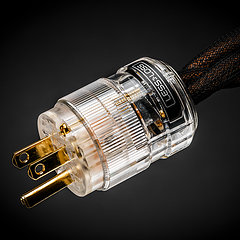 C-MARC™ Prime
The must have foundation for any sound system today.
From
$
486
C-MARC™ Prime
The must have foundation for any sound system today.
From
$
486
-
 C-MARC™ Classic
The unique super-cable power cord everyone's talking about.
From
$
1148
C-MARC™ Classic
The unique super-cable power cord everyone's talking about.
From
$
1148
-
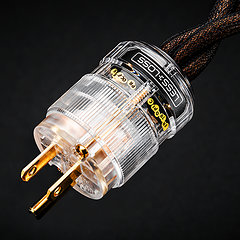 C-MARC™ Classic Entropic Process
The peerless, advanced Classic masterpiece.
From
$
1934
C-MARC™ Classic Entropic Process
The peerless, advanced Classic masterpiece.
From
$
1934
-
 C-MARC™ Stellar Entropic Process
The crown jewel for highest performance power connection.
From
$
2450
C-MARC™ Stellar Entropic Process
The crown jewel for highest performance power connection.
From
$
2450
-
- Loudspeaker Cables
- Interconnect Cables
-
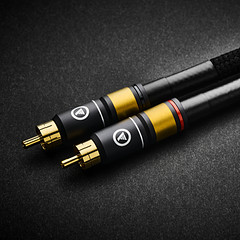 RCA C-MARC™
Cotton-clad true Litz • Whopping 2.3mm2 polarities
From
$
850
RCA C-MARC™
Cotton-clad true Litz • Whopping 2.3mm2 polarities
From
$
850
-
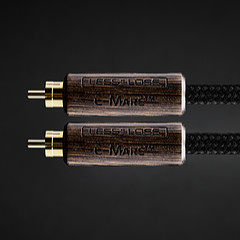 RCA C-MARC™ Entropic Process
Our finest RCA cable • Polished Wenge barrels
From
$
1428
RCA C-MARC™ Entropic Process
Our finest RCA cable • Polished Wenge barrels
From
$
1428
-
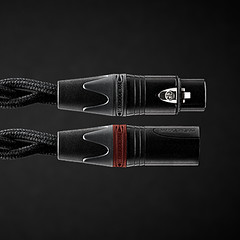 XLR C-MARC™
A hand-braided cotton-clad unique Litz construction
From
$
950
XLR C-MARC™
A hand-braided cotton-clad unique Litz construction
From
$
950
-
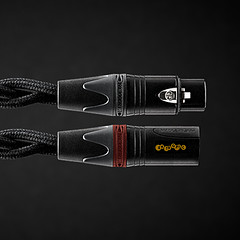 XLR C-MARC™ Entropic Process
Stratospheric performance for the audio connoisseur
From
$
1615
XLR C-MARC™ Entropic Process
Stratospheric performance for the audio connoisseur
From
$
1615
-
- Digital Cables
-
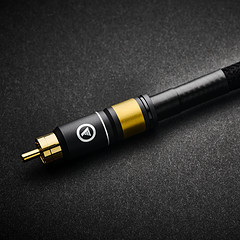 RCA Digital C-MARC™
Cotton-clad unique Litz design • Made only by LessLoss
From
$
510
RCA Digital C-MARC™
Cotton-clad unique Litz design • Made only by LessLoss
From
$
510
-
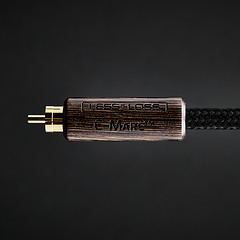 RCA Digital C-MARC™ Entropic Process
Possibly the most subtle digital cable on the planet
From
$
858
RCA Digital C-MARC™ Entropic Process
Possibly the most subtle digital cable on the planet
From
$
858
-
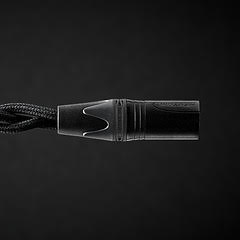 XLR Digital C-MARC™
Featuring a whopping 3 x 2.3mm2 Litz construction
From
$
570
XLR Digital C-MARC™
Featuring a whopping 3 x 2.3mm2 Litz construction
From
$
570
-
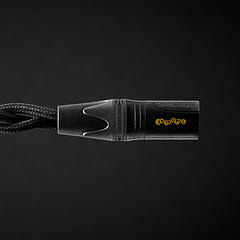 XLR Digital C-MARC™ Entropic Process
Stratospheric performance for the audio connoisseur
From
$
969
XLR Digital C-MARC™ Entropic Process
Stratospheric performance for the audio connoisseur
From
$
969
-
- Grounding Cables
- Bulk Wire and Cable
- Signal Conditioners
-
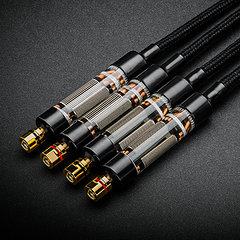 Firewall for Loudspeakers
Firewall for Loudspeakers
C-MARC™ Plug-and-Play Speaker signal conditioning like you've never imagined From $ 1656 -
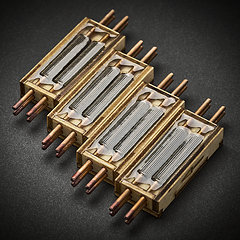 Firewall for Loudspeakers
Firewall for Loudspeakers
DIY version for Self-Installation For the Do-It-Yourself project enthusiast • Solder yourself From $ 800 -
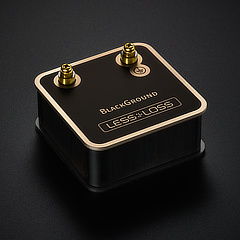 BlackGround DIY
Voltage-ground interface for a variety of applications
From
$
446
BlackGround DIY
Voltage-ground interface for a variety of applications
From
$
446
-
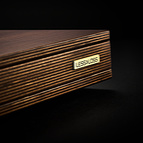 BlackGround 8x/10x Speaker Base
Plug-and-play loudspeaker signal conditioner
From
$
3096
BlackGround 8x/10x Speaker Base
Plug-and-play loudspeaker signal conditioner
From
$
3096
-
- Power Conditioners
-
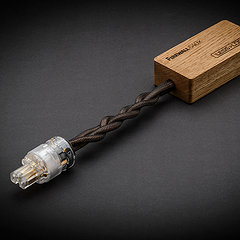 Firewall 640x
Plug-and-play solution for any powered gear
Firewall 640x
Plug-and-play solution for any powered gear
C-MARC™ Entropic Process and standard lead versions From $ 654 -
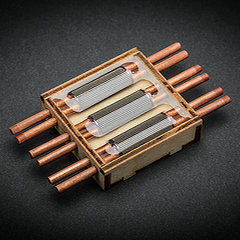 Firewall 640x DIY for Self-Installation
Self-solder and save!
From
$
320
Firewall 640x DIY for Self-Installation
Self-solder and save!
From
$
320
-
 BlackGround DIY
Voltage-ground interface for a variety of applications
From
$
446
BlackGround DIY
Voltage-ground interface for a variety of applications
From
$
446
-
 BlackGround 6x/10x Power Base
Plug-and-play power conditioner
From
$
2350
BlackGround 6x/10x Power Base
Plug-and-play power conditioner
From
$
2350
-
- Power Distributors
- Equipment Feet
- Field Conditioner
- DACs
- Power Cables
- Reviews
- This is definitely the cable to go for. It will almost literally blow your mind. – March 2012, Puresound Magazine
-
I was intrigued by the unanimously positive reviews garnered by these products ...
– by user Raymond Eye
Leaves you speechless
Sensational cables
BEST purchase I've made
Top notch performance
It's a steal
Musical... liquid... 3D
It's not subtle
More than an upgrade
Best I've heard so far
Stellar service
Sounds like a new system
Much more lifelike
Emotional flow
Overwhelming results
More dimensional
Sound is transformative
We were all astounded
Transformed my listening
Sounds so cohesive
Emotionally engaging
- Where to Start
- Free Newsletter
- Newsletter Archive
- B-Stock Alerts
- Shopping Tools
-
Shipping
- Free Shipping Learn about our international shipping policy
-
Return Options
Our satisfaction guarantee
and return policy -
Customs
UPS expedites local
customs clearance
-
Transaction
- Conditions of Sale Agreement for a smooth business transaction
- Privacy Policy We pledge to keep your information private
-
Terms of Use
Business policies
and agreements
-
Account
-
- Contact Us
-
Meet the Designers
-
- Care to share of your personal experience with our products? We'd be happy to post it!
- Want to learn more about our activities? Our Newsletter is both free and spam-free.
hi-res photos, brochures
logos, press releases, and
print-friendly PDF downloads. -
Contact Us
Connect with Us
-
